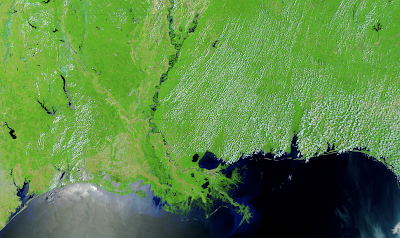(Southern right whale. Credit: � Brian J. Skerry / National Geographic Stock. Via the World Wildlife Fund.)
An interesting new paper in MEPS (Marine Ecology Progress Series) on the southern right whales of New Zealand and Australia.
Background: All right whales, north and south, were taxed hard and early by human whalers�the "right" whales to hunt because their high blubber content made them likely to float after death and because they frequented near-shore waters.
That made them easy to get to even in the days of rowing.
That made them easy to get to even in the days of rowing.
(A painting, artist unknown, showing the hunting of right whales. La Baleine. The Whale, circa 1840. Credit: Wikimedia Commons.)
Some 150,000 Southern Hemisphere right whales (Eubalaena australis) were killed by 19th-century whalers and by illegal 20th-century Soviet whalers�driving the species to the brink of extinction.
Around Australia and New Zealand, hunting peaked in the 1830s-1840s, after which the species was commercially extinct.
The latest IUCN estimate of southern right whales dates back to 1997 when they calculated a population of 7,500 individuals.
At that time, several breeding populations (in Argentina/Brazil, South Africa, and Australia) showed evidence of strong recovery, with a doubling time of 10-12 years.
Which means there might be a fair few more than 7,500 whales today.
(Southern right whale with calf. Credit: John Atkinson. Via Marine Science Today.)
According to the authors of the MEPS paper, no right whales were seen in the waters around mainland New Zealand for 35 years between 1928 and 1963. A few slowly returned. Yet as recently as 2005 less than 12 sexually mature females were found there.
But another group, known as the New Zealand subantarctic group, has a more robust population estimated at about 936 whales today. Forebears of this group were likely present in some small numbers even in the bleakest killing years.
But another group, known as the New Zealand subantarctic group, has a more robust population estimated at about 936 whales today. Forebears of this group were likely present in some small numbers even in the bleakest killing years.

(Credit: E. Carroll, et al, via MEPS.)
The authors of the MEPS paper wondered about the levels of relatedness between those two whale stocks in New Zealand, as well as among whales in Australia.
They used mitochondrial DNA and microsatellite genotypes to identify 707 individual whales and test them for genetic differentiation. You can see the breakdown of that analysis in the graphic above.
Their data, combined with historical evidence, led the researchers to hypothesize that individuals from the NZ subantarctic are slowly recolonizing mainland New Zealand waters, where a calving ground was obliterated in the 19th century.

(Southern right whale. Via.)
The genetic evidence also suggests that the whales of southeast Australian are a remnant stock�different from the whales of southwest Australia:
At the onset of whaling, southern right whales, in particular cows with calves, were found across the southern coast of Australia during the austral winter (IWC 1986). There was no real discontinuity in distribution or catch records to suggest subdivision of calving grounds in this region (IWC 1986). Based on the timing of catches at shore whaling stations during the 19th century, Dawbin (1986) proposed that southern right whales undertook 2 distinct patterns of migration along the southern coast of Australia during the austral winter. The southern right whales that migrated north along the east coast of Tasmania [the small island off the southeast tip of Australia, as seen in the graphic above] moved in a northeasterly direction up the coast of Victoria and New South Wales, while those that migrated north along the west coast of Tasmania moved from east to west along the southern coast of South and Western Australia. The latter pattern is still extant, based on the movement of photo-identified southern right whales and has been termed the 'counter-clockwise' migratory pattern (Kemper et al. 1997, Burnell 2001).
(The Southern Ocean. Credit: Connormah via Wikimedia Commons.)
They also found evidence that New Zealand and Australian right whales mingle in higher-latitude summer feeding grounds each austral spring�making the health of those cold Southern Ocean waters as important a component of recovery as the whales' breeding efforts.
And what epic efforts they are. Imagine a 12-foot-long penis�known colloquially as a sea snake�plus a tons' worth of testes per male. Mating becomes a sport of endurance. And sperm competition.
But you don't have to imagine it. As usual, just for us, David Attenborough respects the privacy of none.
Carroll, E., Patenaude, N., Alexander, A., Steel, D., Harcourt, R., Childerhouse, S., Smith, S., Bannister, J., Constantine, R., & Baker, C. (2011). Population structure and individual movement of southern right whales around New Zealand and Australia Marine Ecology Progress Series DOI: 10.3354/meps09145













































